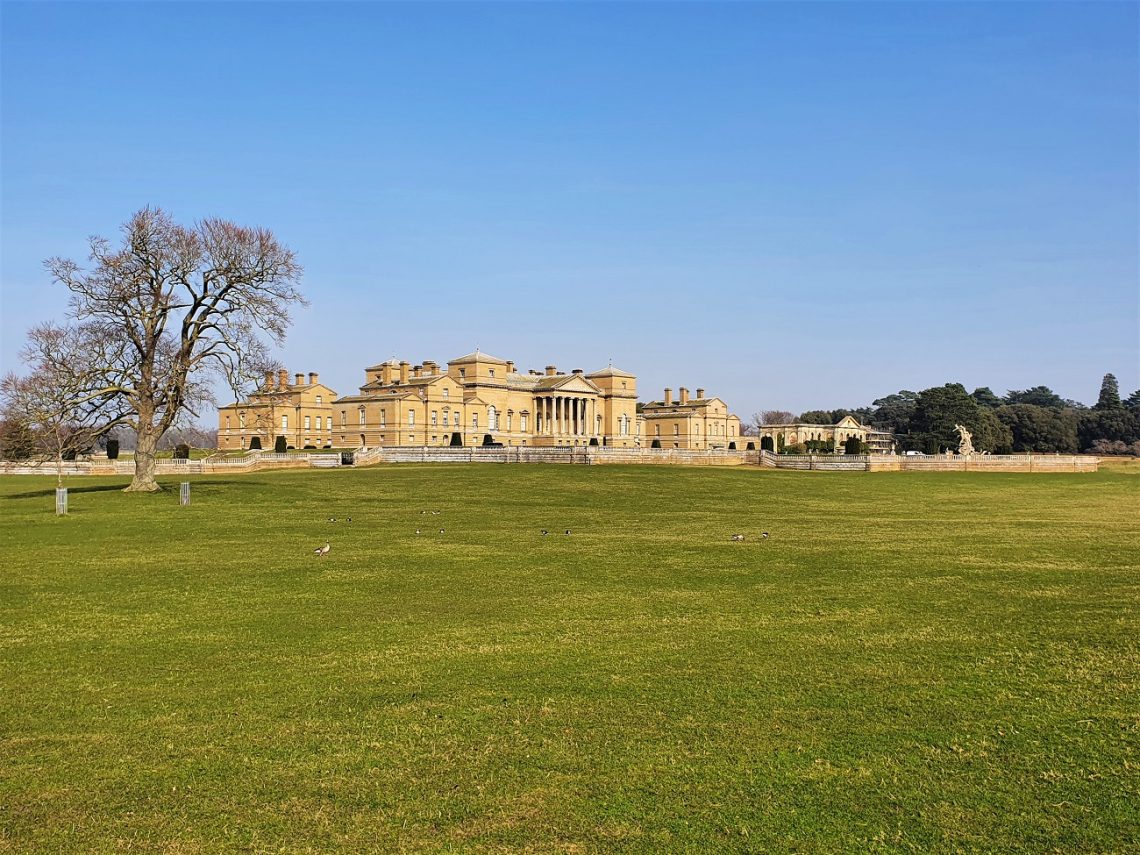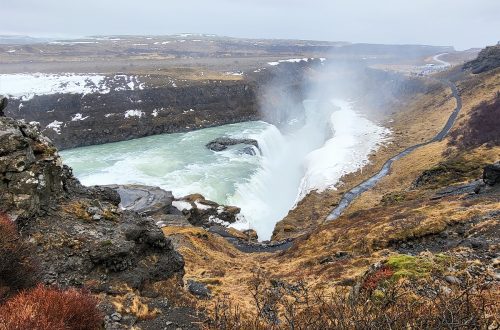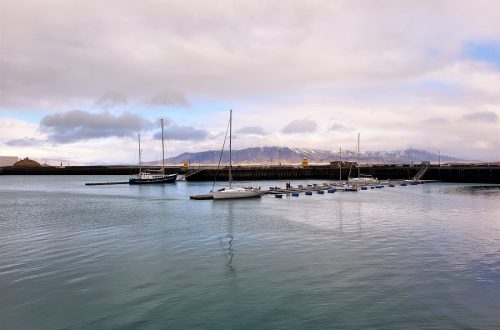I’ve been to many a stately home in my time, but the Holkham estate on the north Norfolk coast is one of my all time favourites – and I didn’t even step foot in the hall!
Made up of a grand Palladian mansion surrounded by 3,000 acres of parkland, Holkham also boasts a boating lake (above), 700 acres of woodland, a walled garden, various historic buildings, a village, a nature reserve and a sandy beach.
Plus it’s home to around 400 fallow deer (below). In short, there’s plenty to see and do, and you need a full day to see everything.

The estate dates back to the early 17th century when Sir Edward Coke, a local lawyer who later became the Lord Chief Justice, bought a manor house in the village of Holkham.
Three years later, his son John married Meriel Wheatley, a local heiress, and they inherited Hill House, the grandest house in the village.
Together, the two houses and their grounds formed the basis of the Holkham estate.
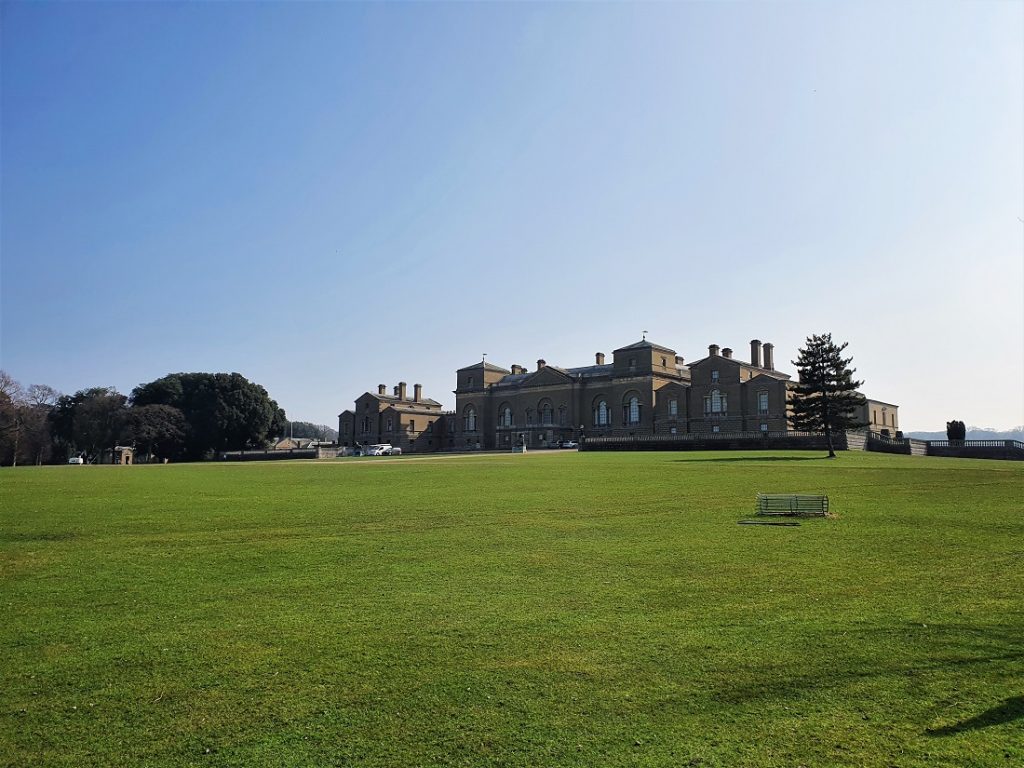
The current Palladian mansion was built between 1734 and 1764 by Thomas Coke, Earl of Leicester, and it was significantly enlarged and improved by his great-nephew Thomas William Coke.
Today, it’s still the family home of the Earl of Leicester and because of this, the hall is only open to the public on Mondays, Thursdays and Sundays between the end of March and the end of October.
I arrived at Holkham in the early afternoon and after parking my car, made my way to the visitor reception next to the hall.

Holkham Hall wasn’t yet open to visitors (I was a week early). So I set off to explore the extensive grounds instead, starting with the boating lake (above).
The mile-long lake is home to a couple of islands and a host of wildlife, and I spotted numerous geese and ducks as I walked along the lakeside path.
During the summer, visitors can rent a rowing boat from the jetty to better explore the lake, which would be a fun way to while away an hour or two.
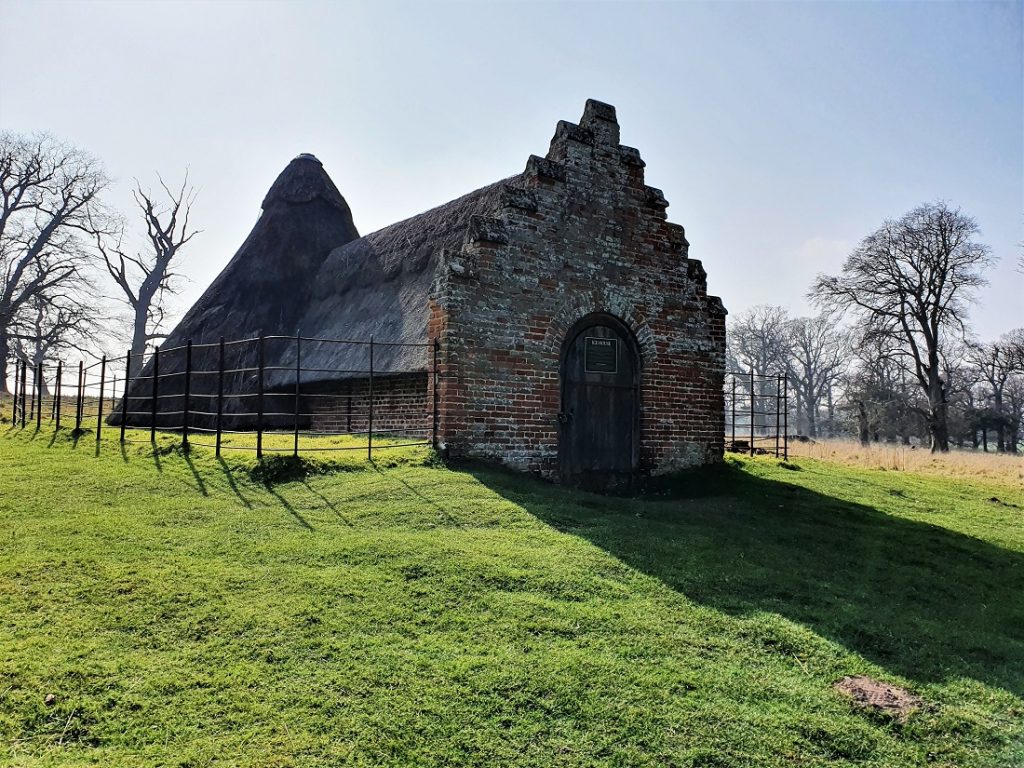
From the lake, I strolled up the hill to take a look at the intriguing-looking ice house (above).
Dating back to at least the 1740s, the thatched, red-brick structure is said to be the second oldest building on the estate after St Withburga’s Church.

A little further uphill, I took a detour from the path in the direction of the temple (above).
Nestled in the woods, the temple is a small, but beautiful, Palladian folly that was built at the same time as Holkham Hall.
During the Second World War, it was used as a base by the home guard and it’s now used for wedding ceremonies, events and shooting lunches.
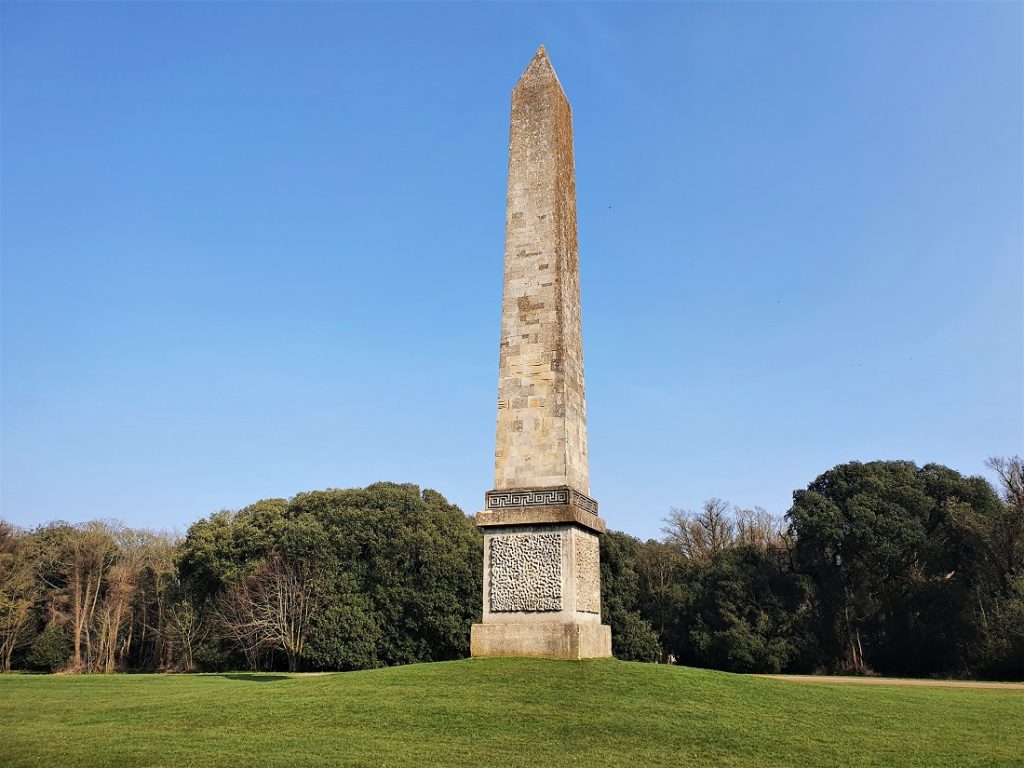
From the temple, I wandered up to the obelisk, a 25m-high monument dating back to 1732 that dominates the surrounding area.
The Holkham estate is massive and having covered only a fraction of the park, I realised there was no way I was going to fit in my planned route in the time I had.
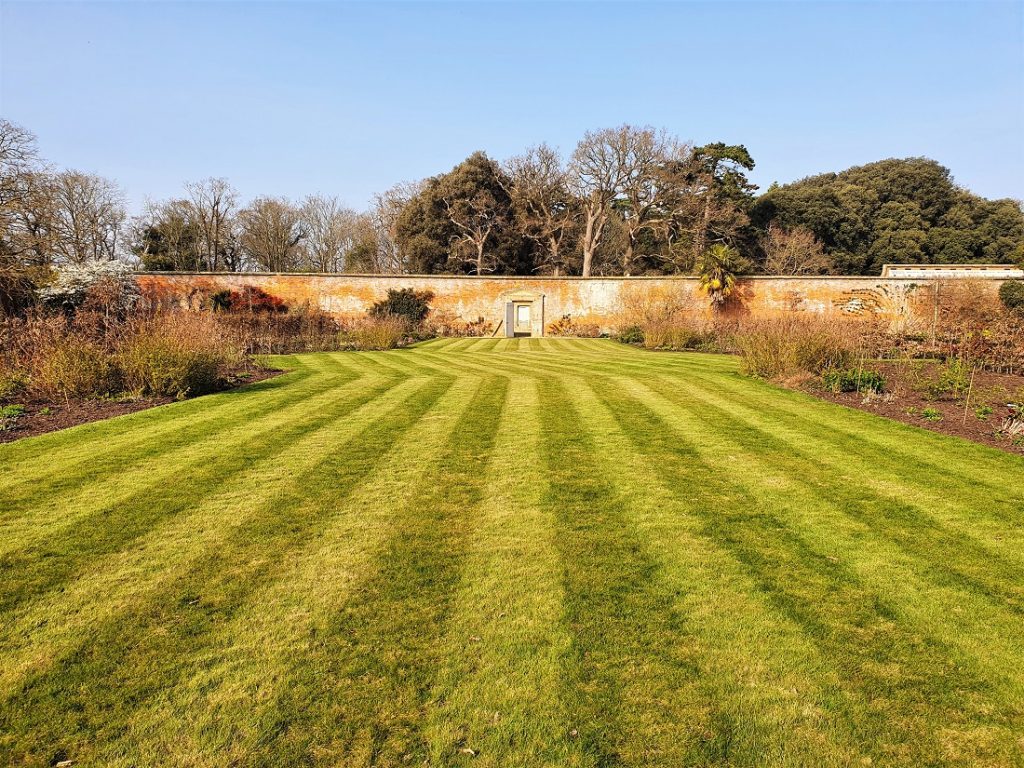
So I changed my plan, turning back from the obelisk towards the lake in search of the walled garden (above).

The six-acre garden, which is home to a vineyard (above), orchard and kitchen garden, was commissioned by Thomas William Coke in the 1780s.
Two glasshouses were added in the 1870s to grow peaches and grapes, and the entire garden was restored 15 years ago.
Because it was late March, there wasn’t much to see, as many of the plants and trees had yet to spring back into life.
But it nevertheless made for a pleasant and peaceful spot for a walk.
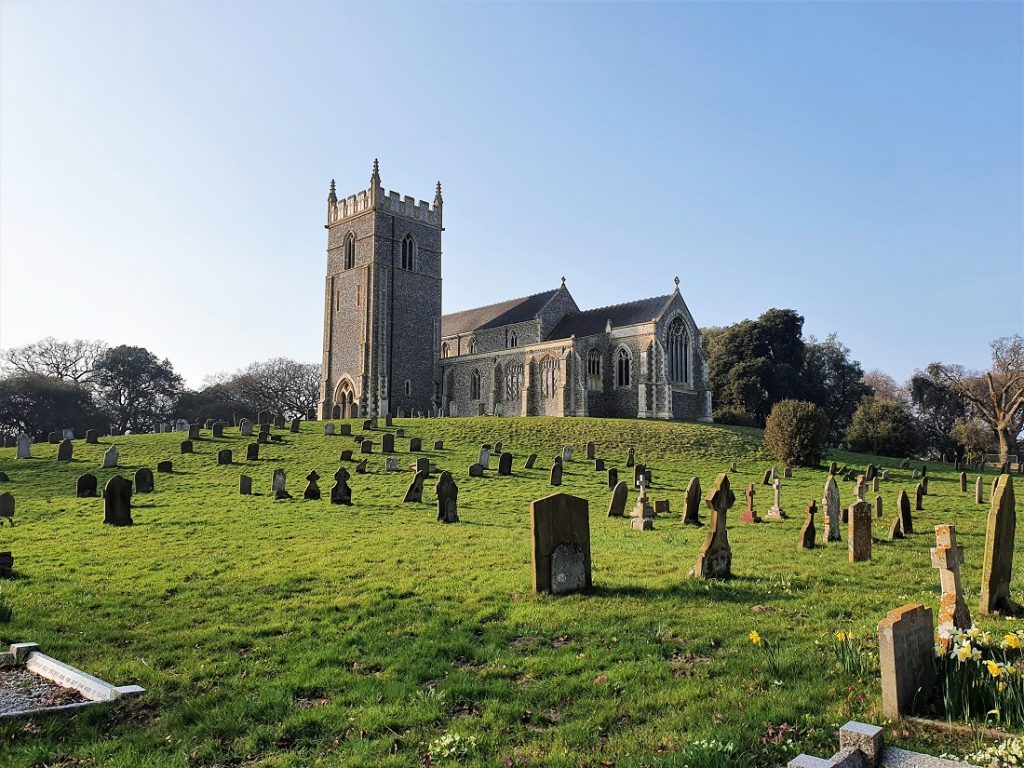
From the walled garden, I made my way to St Withburga’s Parish Church (above).
The attractive church is thought to have been built in the 13th century, making it by far the oldest building on the estate.
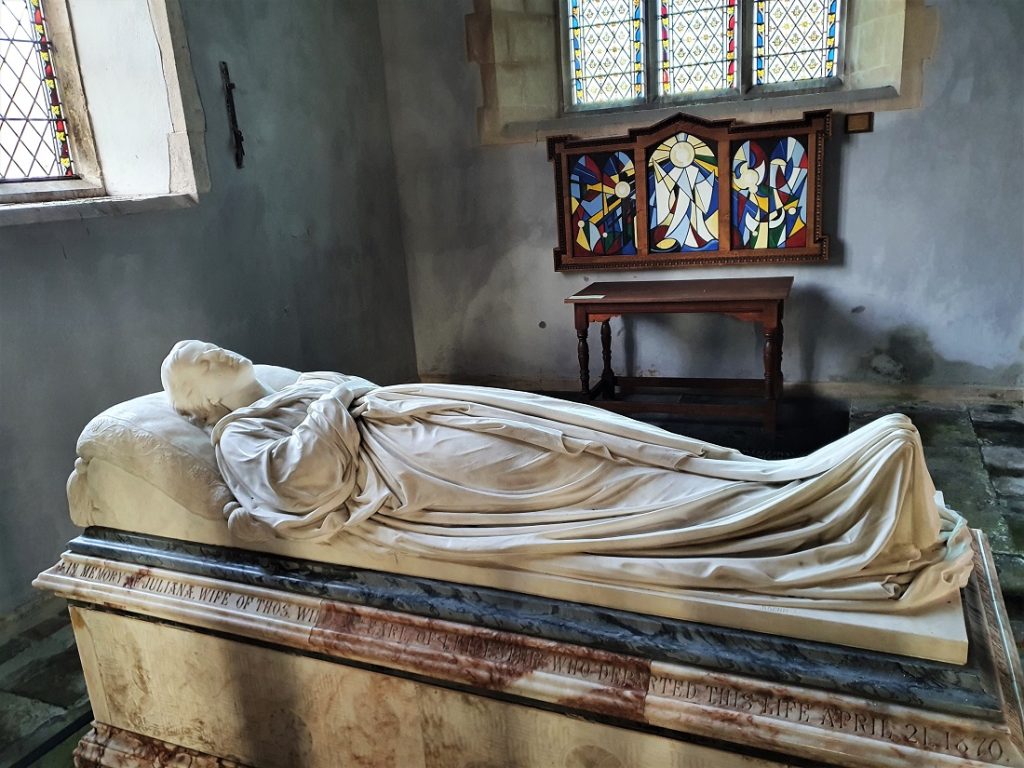
Inside, the church was fairly simple and my eye was drawn to the grand marble tomb of Juliana, the wife of the 2nd Earl of Leicester (above), who was responsible for restoring the church in 1869.
On leaving the church, I headed towards the lake, where I skirted its lower end in the direction of the woods.
It was late afternoon by this point and I had the quiet, atmospheric woods all to myself.
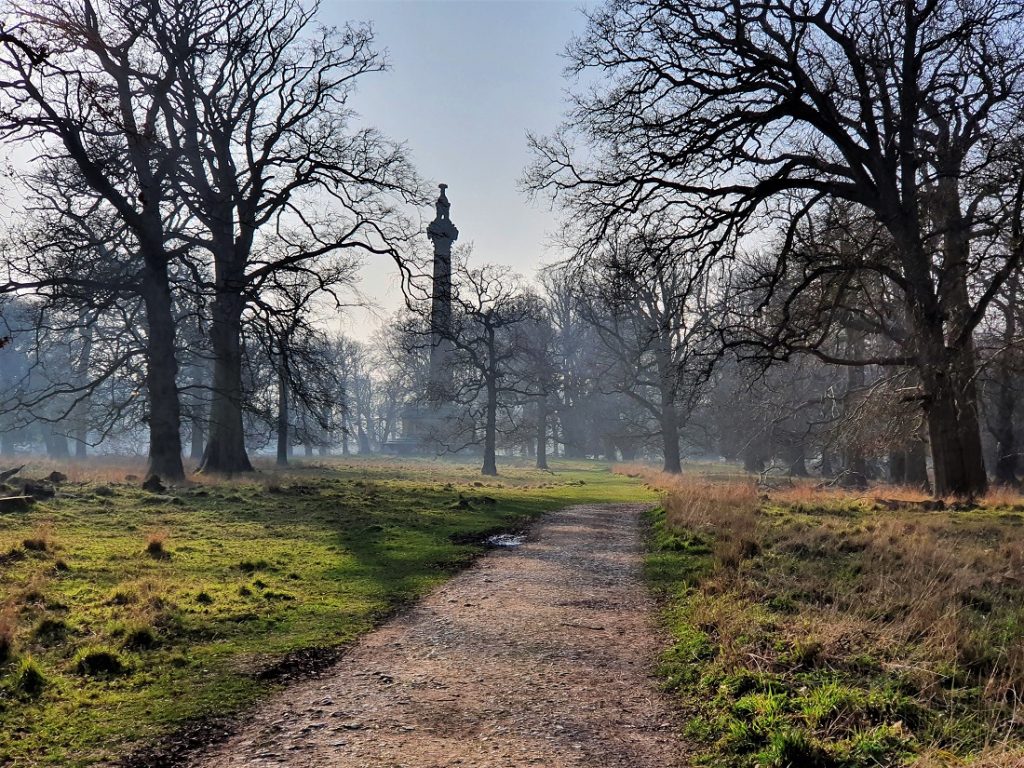
As I strolled along the misty paths, I spied the Coke Monument in the distance (above).
Erected in the 1850s, the striking, 37m-tall monument was built to commemorate Thomas William Coke.
A short while later, I stopped in my tracks when a few deer suddenly leaped across the path ahead of me .
I knew Holkham had deer, but I hadn’t expected to see them, and certainly not in such close proximity.
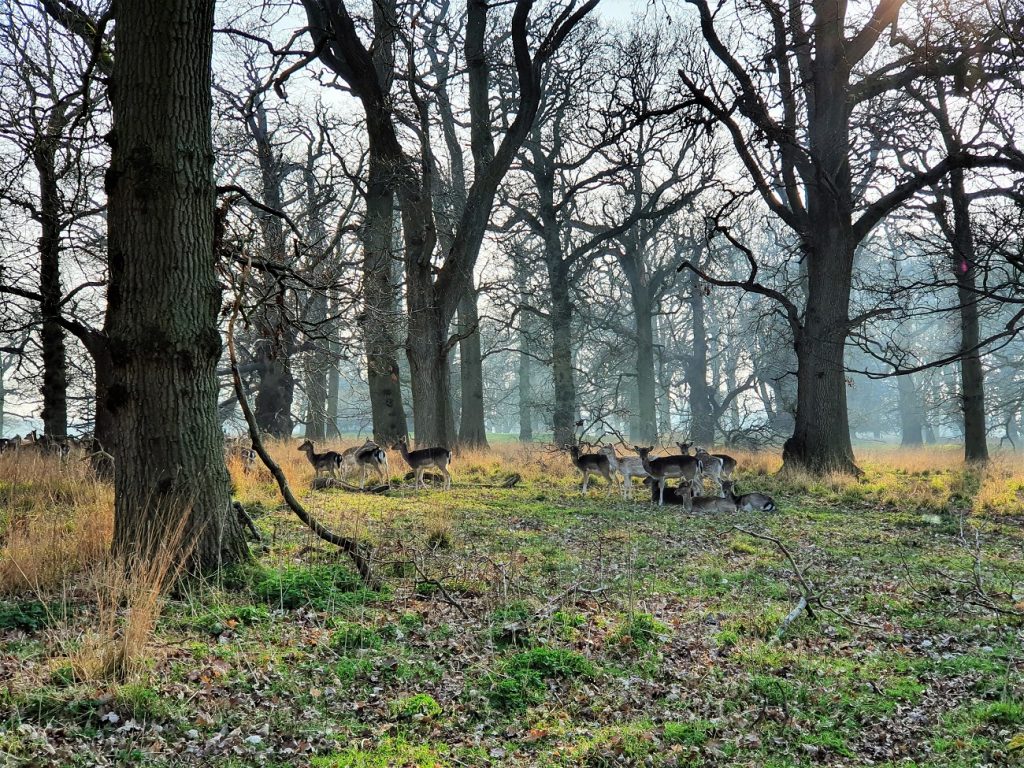
As I approached the point where the deer crossed the path, I saw a large herd in the woods (above).
I stopped to watch them for a short while, amazed at how close I was, and surprised by how calm the animals were.
They didn’t run off at the sight of me and even seemed curious by my presence. But I didn’t linger long, as I didn’t want to scare them.
From the woods, I made my way back to the hall’s visitor centre, where I spent some time looking around the shop and bought a fabulous wooden bee hotel.
I loved my visit to Holkham, even though it was far too short and I only saw a fraction of what there is to see.
I’d love to go back to explore the entire estate and when I do, I’ll be sure to spend the whole day rather than just an afternoon.

